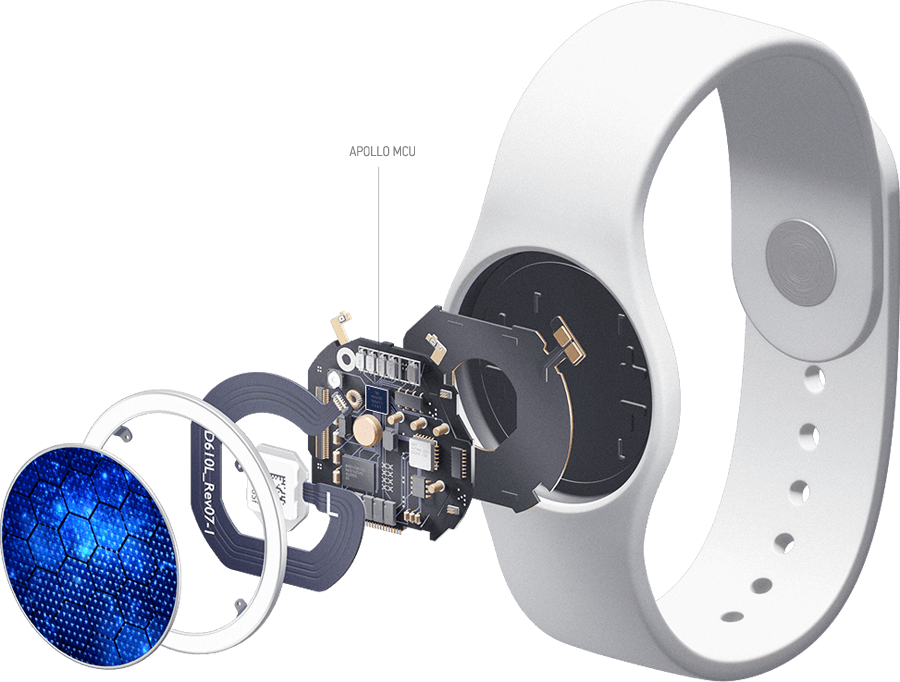Indicators on apollo4 blue plus You Should Know
Indicators on apollo4 blue plus You Should Know
Blog Article

This growth aims to meet the developing calls for from the business and even further enhance Ambiq’s circuit layout abilities. As Section of the enlargement, Ambiq is actively trying to get regional skills to hitch its team and assist its global growth endeavors.
Our workforce of market place analysts can assist you choose the best report masking your business. We understand your area of interest region-precise needs Which’s why we offer customization of reports.
In 1965, the Apollo Applications Method (AAP) was established to look into science missions that could be executed employing Apollo hardware. A great deal on the organizing centered on the idea of an area station. Wernher von Braun's previously (1964) plans used a "moist workshop" thought, by using a spent S-II Saturn V next phase being introduced into orbit and outfitted in Area. The next yr AAP examined a more compact station using the Saturn IB second phase. By 1969, Apollo funding cuts eliminated the opportunity of procuring additional Apollo components and forced the cancellation of some later on Moon landing flights.
Around the return to Earth, a bearing for the Guam tracking station unsuccessful, possibly blocking conversation on the final segment with the Earth return. A regular repair service was not possible from the accessible time although the station director, Charles Force, experienced his 10-yr-outdated son Greg use his small palms to succeed in in to the housing and pack it with grease. Greg was later thanked by Armstrong.[179] Splashdown and quarantine
Following the Apollo eleven mission, officials within the Soviet Union mentioned landing human beings on the Moon was unsafe and unnecessary. At enough time the Soviet Union was seeking to retrieve lunar samples robotically. The Soviets publicly denied there was a race towards the Moon, and indicated they weren't producing an endeavor.[228] Mstislav Keldysh mentioned in July 1969, "We're concentrating wholly to the creation of large satellite techniques.
Very merely, smart wearables are poised to push the development of the marketplace For a long time to come.
Intelligent Controllers Apollo microprocessors are transforming the remote controls into Digital assistants by enabling the always-on voice detection and recognition capabilities to develop an intuitive and integrated natural environment for smart properties.
Generally-on Audio Normally-on Audio Encounter genuinely constantly-on voice processing having an optimized noise cancelling algorithms for obvious voice. Realize multi-channel processing and superior-fidelity electronic audio with enhanced electronic filtering and low energy audio interfaces.
Examine extra SoC Ambiq Apollo family members of SoC represents a quantum breakthrough in extremely-very low ability style, offering one of the most energy-successful sensor processing options available in the market.
These devices, run from the Ambiq Apollo3 Blue SoC, make use of Bluetooth signals to trace folks in proximity and may function and not using a recharge for a formidable 4 to 6 months.
In the mission, the induce was diagnosed as the rendezvous radar change getting in the wrong place, creating the computer to process data from both equally the rendezvous and landing radars simultaneously.[121][122] Application engineer Don Eyles concluded in a very 2005 Direction and Handle Conference paper that the problem was as a consequence of a components style and design bug Formerly observed during tests of the primary uncrewed LM in Apollo 5. Acquiring the rendezvous radar on (so it had been warmed up in case of an unexpected emergency landing abort) should have been irrelevant to the pc, but an electrical phasing mismatch amongst two parts of the rendezvous radar process could result in the stationary antenna to look to the computer as dithering backwards and forwards in between two positions, relying upon how the components randomly driven up.
They go away powering an American flag, a patch honoring the fallen Apollo one crew, and also a plaque on among Eagle’s legs. It reads, “Listed here Guys in the World Earth to start with set foot on the moon. July 1969 A.D. We came in peace for all mankind.”
“As Ambiq continues to diversify and expand its enterprises around the world, the new Technology Style and design Middle is a further testomony to our dedication and investment in Singapore for long run good results, allowing us to improve our advancement groups properly.”
After a person plus a half orbits, Apollo eleven will get a “go” for what mission controllers call “Translunar Injection” – Basically, it’s time to head with the moon.
Get Smart. Use Less Energy.
Ultra-low power SoCs for IoT endpoint devices
that demand complex operations
and longer battery life.
✍ Ambiq® is committed to further improve the quality of life by enabling the intelligence of endpoints while further reducing carbon footprints. Ambiq – your partner in endpoint intelligence.
✯✯✯Based in Austin, San Jose, Hsinchu, Shenzhen, and Shanghai, our leadership and management teams consist of advocates, builders, enthusiasts, entrepreneurs, explorers, incubators, inventors, pioneers, protectors, thinkers, and visionaries. With a diverse spectrum of experiences and skillset, we came together and united with one goal to enable the true Internet of Things where the battery-powered endpoint devices can truly be connected intuitively and intelligently 24/7.
Ambiq Wins the Demo of the Year Award at 2023 TSMC Technology Symposium
September 7, 2023, Austin, TX – Ambiq®, a leading developer of ultra-low-power semiconductor solutions that deliver a multifold increase in energy efficiency, was awarded the Demo of the Year Award by TSMC as a participant of the Innovation Zone at the 2023 TSMC North America Technology Symposium.
Ambiq Wins the Demo of the Year Award at 2023 TSMC Technology Symposium
During the April event, Ambiq showcased various product design wins using TSMC’s 22nm technology in wearables, digital health, smart home, Industrial IoT, pet trackers, and retail segments, with industry-leading energy efficiency. Ambiq also featured two live demos emphasizing its leadership in enabling endpoint AI with its HeartKit™ for remote patient monitoring and its graphics display capabilities for a vivid user interface. 
TSMC pioneered the pure-play semiconductor foundry business model when it was founded in 1987, helping startup companies accelerate their innovations by providing access to the industry’s leading process technologies and manufacturing capacity. Since 2021, TSMC has expanded that mission with Cool wearable tech an Innovation Zone at its worldwide Technology Symposiums, highlighting how TSMC partners with startup companies to enable cutting-edge products from various applications, including high-performance computing, communication, automotive, IoT, and consumer segments.
“We’re grateful to TSMC and our booth visitors for allowing us to share our energy-efficient technology and processor solutions with them,” said Ambiq’s CEO, Fumihide Esaka. “We’re moving towards an exciting frontier of AI becoming more engrained with our daily lives. With that vision on the horizon, we will continue to develop innovative and first-of-its-kind ultra-low-powered solutions that keep innovation and sustainability in mind. 
Ambiq’s mission is to develop the lowest-power semiconductor solutions to enable intelligent devices everywhere by developing the lowest-power semiconductor solutions to drive a more energy-efficient, sustainable, and data-driven world. Ambiq has helped leading manufacturers worldwide develop products that last weeks on a single charge (rather than days), while delivering a maximum feature set in compact industrial designs. Ambiq’s goal is to take Artificial Intelligence (AI) where it has never gone before in mobile and portable devices, using Ambiq’s advanced ultra-low power system on chip (SoC) solutions. Ambiq has shipped more than 200 million units as of March 2023.
Ambiq Designs Low-Power for Next Gen Endpoint Devices
Ambiq’s VP of Architecture and Product Planning, Dan Cermak, joins the ipXchange team at CES to discuss how manufacturers can improve their products with ultra-low power. As technology becomes more sophisticated, energy consumption continues to grow. Here Dan outlines how Ambiq stays ahead of the curve by planning for energy requirements 5 years in advance.
Ambiq Highlights From Embedded World 2024
Facebook | Linkedin | Twitter | YouTube